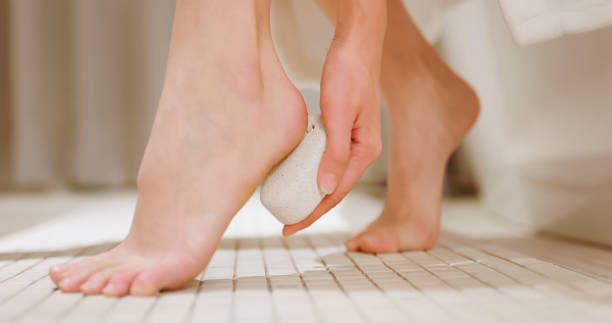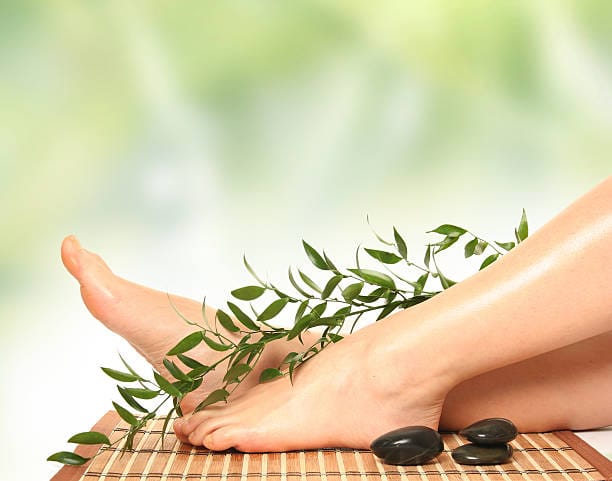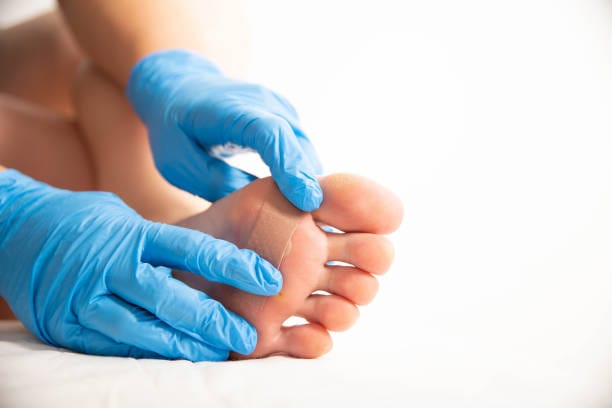Verruca Treatment Aftercare: Essential Tips for Fast Healing & Prevention

Verrucae are stubborn warts. They are contagious growths caused by the human papillomavirus (HPV). Some need to be removed professionally, such as using cryotherapy, laser therapy, or electrosurgery, yet many disappear with time. Once removed, it is essential to have a correct verruca treatment aftercare for it to heal fast, prevent infection, and reduce the chances of its reoccurrence.
The treatment method may slightly impact the verruca treatment aftercare process, but the main principles remain the same: clean the area, avoid irritating it, and follow medical advice. Failure to provide aftercare can allow an infection to develop, cause the verruca not to heal as it should, and even lead to the verruca returning.
This guide provides important post-treatment tips, such as immediate aftercare, infection prevention, pain control, and long-term care. Following these steps can minimise the risk of the verruca returning and ensure a smooth recovery.
Now that you know what to do after verruca removal, we discuss the best ways of healing verruca holistically and successfully.
Immediate Verruca Treatment Aftercare
The first 24 to 48 hours after a verruca's removal are crucial for proper healing. Depending on the treatment method, you may experience redness, mild swelling, tenderness, or scabbing after this period. After the right Verruca treatment, aftercare steps should be followed to prevent complications and speed up recovery.
What to Expect After Treatment
The area is treated, and it may sometimes blister or scab. Some discomfort is normal. The skin may feel sensitive even after laser or Electrosurgery, and there may be a small wound. In Acid-Based treatments, the treated skin will likely peel or turn white before healing.
Skin Care Tips
- To avoid the risk of infections, the area must be kept clean and dry.
- Do not pick or scratch the treated area, as it will delay the healing of the wound.
- You must change dressings as directed by your specialist.
- Controlled blister rupture occurs as part of the healing process; therefore, if you get one, do not pop it.
Pain Management
- If you need, take over-the-counter painful relief such as ibuprofen or paracetamol.
- You can use a cold compress to relieve the swelling and keep it away from the wound.
- Elevate the foot to decrease discomfort if the verruca is on your sole.
Activity Restrictions
- Mild rubbing can resume the usual use of the treated area after a day.
- Wear comfortable, breathable shoes if the verruca was removed from the foot.
- Do not swim, saunas, or hot tubs for 48 hours.
By doing these steps, it ensures your skin starts healing properly and avoids being infected.
Preventing Infection For Verruca Treatment Aftercare
In other words, proper verruca treatment aftercare is important to avoid infection, for infections tend to delay healing and cause known complications. However, by keeping the treated area clean and following medical advice, bacteria entering the wound should be minimal.
Signs of Infection to Watch For
Verruca removal is usually followed by mild redness, scabbing and slight discomfort. Look out for these signs that there is infection, but:
- Pain that does not improve or increase.
- Redness spread over 3 inches (7.5 centimetres) around the injury site.
- It becomes swelling that is worsening rather than improving.
- Pus, yellow discharge, or an unpleasant odour.
- In severe cases, fever, chills, or general unwellness.
If you experience these symptoms, your doctor or specialist must treat you immediately. If you delay, complications and prolonged healing can follow.
How to Keep the Area Clean
- Before and after touching the treated area, always wash your hands thoroughly.
- Gently clean the wound with mild soap and lukewarm water if advised. Avoid scrubbing.
- Clean a towel over the area, and don’t rub.
- Antiseptic should be applied if suggested, but harsh chemicals such as hydrogen peroxide should not be used unless told to by your child's doctor.
- Do NOT soak the area in water (baths, pools, saunas) for 5–7 days.
Protecting the Treated Area
It would be advisable to use a breathable dressing, especially if the verruca were on the foot and for only a few days.
- Change dressings daily or as per your specialist’s direction.
- Clean, dry socks and loose-fitting shoes, which avoid friction.
- The skin should be allowed to breathe at home to help heal faster.
- Reinfection can be prevented by not sharing towels, socks and footwear.
When to Contact a Doctor For Verruca Treatment Aftercare
If rather than improving, the wound becomes more painful after the first few days.
- Red streaks may also appear around the area (infection).
- If you develop any of the above infection symptoms.
- If the verruca persists or worsens.
These precautions will help you avoid infection and to have a smooth recovery.
Managing Pain and Discomfort
Verruca removal pain is quite common and depends on the eradication method used. Laser or electrosurgery can tender the area for several days, and cryotherapy can cause a few hours of burn or sting. Acid-based treatments cause the skin to peel with mild irritation. Proper aftercare of verruca treatment involves the correct management of discomfort.
Pain Relief Methods
Paracetamol or ibuprofen, available over the counter (from your pharmacy), may also ease pain and inflammation. However, do not take aspirin, as it may raise bleeding risks.
Apply an ice pack: To numb the area and reduce swelling, wrap an ice pack in a cloth and apply it to the affected area for 10–15 minutes. Ice should be placed on the skin, but avoid putting it directly on it.
If the verruca was on the foot and stepped into the bath, refrain from walking or standing for the first 24–48 hours to avoid pressure on the area. Wearing soft, cushioned footwear can also alleviate the condition.
Raise the foot: This helps draw out the fluid and lessen the pain caused by swelling.
Skincare and Protection
To prevent the treated area from getting too dry, moisturise it with light, non-irritating lotion (avoid strong cream or chemical-based ointment without your specialist’s recommendation). Applying the prescribed antibiotic ointment helps heal and prevents infection as directed.
Scratching or picking at the scabs should be avoided as they can irritate, slow down recovery time, and make the infected. In addition, heat can make matters worse in the first few days, so it is advised to avoid hot baths, saunas, and long showers. However, kindly wipe the area with diffuse soap and lukewarm water.
Following these steps can control the pain, reduce the swelling and improve the healing time after verruca removal.
Promoting Healing of the Wound through Care
After verruca removal, proper wound care is important to assist with faster recovery and prevent complications. Healing time varies depending on the treatment, but most patients greatly improve in one to two weeks. After reliable verruca treatment aftercare, there will be smooth and scar-free healing.
Keeping the Area Clean
Hygiene is very important for preventing infection and for healing. You should:

- Before touching the treated area and after, wash your hands.
- Clean the wound with mild soap and lukewarm water, and do not scrub.
- Instead of rubbing, pat dry with a clean towel. If you rub, your skin can take longer to heal.
- For at least 5–7 days, avoid soaking the wound in water, even baths, swimming pools, hot tubs, etc.
Covering the Wound
Irritation can also infect the area if the area is not kept protected:
- The wound should be covered for the first few days using a breathable, sterile dressing.
- If the verruca is pulled from the foot, wear clean, dry socks and do not wear tight shoes.
- Dressings should be changed daily or often when wet or dirty.
Encouraging Skin Regeneration
As your skin heals, it will form new skin over the treated area; however, you can help the process by:
- The prescribed healing ointment is to keep the wound moist.
- Consuming alcohol-containing products and products with strong acids.
- Allow the area to breathe when at home by briefly removing the dressing.
Preventing Infection and Complications
When removing a verruca, it is important to treat the area properly. Otherwise, an open wound is left behind and prone to infection and complications. Although most people heal just fine, there are steps to follow after verruca treatment and aftercare to avoid unnecessary discomfort and healing time.
How to Reduce Infection Risk
Keeping the wound clean and protected is the best way to prevent that. To lower the risk:
- It is recommended that the area be gently washed with mild soap and water; harsh antiseptics should be avoided unless directed.
- Keep changing dressings regularly to avoid bacteria buildup if the wound is moist.
- Hands should be cleaned before touching or applying ointment onto the treated area.
- Do not swim in a pool; go to a sauna or take commercial showers for at least a week. Such places are teeming with bacteria.
Warning Signs of Infection
- Mild redness and tenderness are normal; however, check the area for signs of becoming infected, which may include:
- Swelling, redness or warmth around the wound that gets worse.
- A pus or yellowish discharge from the treated area.
- Worsening pain instead of pain that has gotten better.
- Some may have fewer symptoms, such as fever or flu-like symptoms that indicate a more serious infection.
See your doctor immediately to avoid side effects if you find any such symptoms.
Avoiding Other Complications
However, there are more things than infections, like delayed healing or scarring. To minimise risks:
- Avoid picking at scabs or peeling skin since it can cause scarring or re-open the wound.
- Wear loose, comfortable footwear to prevent pressure if the verruca is on your foot.
- To help allow recovery, there shouldn’t be too much friction or rubbing that can irritate the sensitive area.
Most verrucae heal with proper care. However, if the verruca returns or does not heal as expected, please seek follow-up advice from your specialist.
By taking precautions such as not walking barefoot, you can reduce your risk of getting an infection following the wart removal, speed up your healing, and prevent complications in the future. This will ensure that you get the best results after removing your verruca.
When to Resume Normal Activities
The time it takes to return to your daily routine after verruca removal depends on the kind of treatment removed and the skin's verruca treatment aftercare. Some people recover quickly, but others must be careful not to irritate or infect it. Verruca treatment aftercare helps you get back to normal activities smoothly.

Walking and Physical Activities
- If the verruca were on your foot, it would be advised not to walk or stand for 24–48 hours after treatment to relieve pressure on the treated area.
- Therefore, you must avoid intense physical activities like running or gym workouts for at least one week to prevent discomfort or the wound from opening back up.
- Soft, cushioned shoes should be worn to protect the healing skin and prevent friction.
Bathing and Swimming
- To avoid infection and irritation, it is best to avoid hot baths, swimming pools, and saunas for at least one week.
- The treated area is generally safe; dry it and avoid scrubbing it.
- Once the skin has healed, it is recommended to moisturise the area gently to avoid excessive dryness.
When to Take Extra Precautions
If the treated area still feels sore, swollen, or irritated, let your body rest longer and avoid normal activities like bending your knees deeply, jogging, squatting, and jumping. In extreme cases, excessive movement or pressure may prevent healing. If you are in doubt about entering strenuous activities, see your specialist.
If you prevent yourself from having verruca removal, you will encourage new verrucae to develop and make the existing ones larger. In this case, slowly returning to your routine will help prevent discomfort and properly heal your verrucae.
Preventing Verruca Recurrence
Verruca removal can be unsuccessful, with recurrence after treatment, aftercare, and prevention strategies not being followed. Verrucas are caused by the human papillomavirus (HPV), which grows in warm, moist environments. There are some proactive measures that you can take to prevent reinfection and maintain healthy skin.
- Protect your unprotected feet in public areas.
- In communal public spaces such as swimming pools, gyms, public showers, etc., wear flip-flops or sandals to prevent coming in contact with HPV.
- Stay away from walking barefoot on floors that may be wet, where the virus may be.
- After bathing, thoroughly dry your feet, particularly between the toes.
Boost Your Skin’s Natural Defense
Strong immunity is a very important element in preventing verruca from recurring. To enhance your skin’s defence:
- It is important to keep good foot hygiene by washing and moisturising.
- Do not get your feet wet and sweaty, as the moist skin is more likely to get infected.
- Sharing towels, socks, or footwear should be avoided, as HPV may be spread on contaminated items.
You may note early signs on your skin.
Even after treatment, always check your feet and hands for white, small, rough, or grainy growths. Verruca could be growing now. If you find any strange changes, it is best to get treatment early so they don’t spread.
Maintain a Strong Immune System
Verrucas are somehow associated with viral infections; hence, a healthy immune system will help prevent recurrence. Take a diet with plenty of vitamins and antioxidants.
Staying physically active improves circulation and general health. Stress can be managed, and getting enough sleep helps, as fatigue weakens the body’s defences.
Following these preventative measures will help decrease the chances of the verruca recurring and keep the skin healthy after the treatment.
Why Choose Revitalise London for the best Verruca treatment aftercare?
Revitalise London offers safe, effective, and professional verruca removal tailored to your needs. We have the best specialists who practice using new and advanced techniques from cryotherapy to laser therapy and electrosurgery to guarantee fast recovery with minimal discomfort. We provide complete aftercare instructions to ensure you heal fully and avoid it happening again. We are committed to our state-of-the-art clinic, personalised care and proven results in treating Verruca’s success. Contact us today for a consultation and have healthier skin under the care of experts.
Conclusion
Aftercare with proper verruca treatment will help ensure speedy recovery and avoid complications. Keeping the area clean, protecting the wound, and following your specialist’s advice will make the wound heal quicker and less painful. Further recovery will be supported if you monitor for signs of infection and avoid activities in pressure-treated areas.
To avoid occurrences of verruca, good foot hygiene, walking with socks and shoes covering your feet in public places and having a strong immune system prevent the recurrence of verruca. Treating any new verrucas early can stop them from spreading.
We offer expert aftercare during a safe and effective verruca removal process at Revitalise London. So when you need professional treatment as well as proper guidance, book an appointment today and start making your skin brighter and blemish-free
